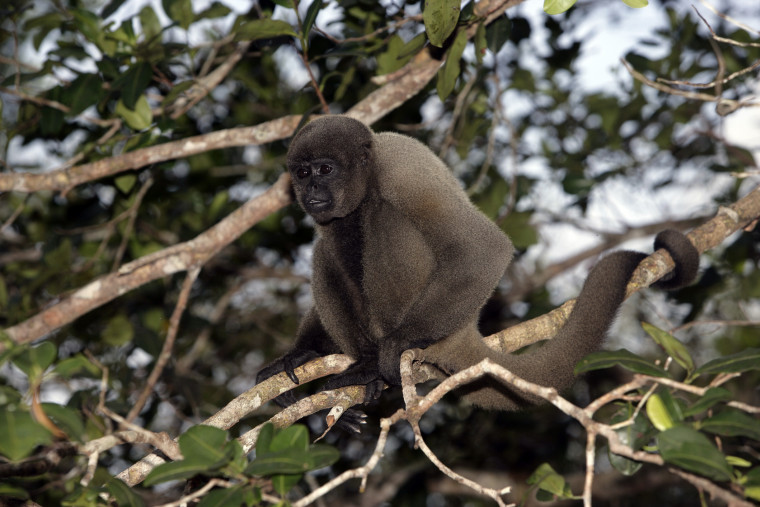Re-thinking the Rights of Nature to Encompass New Protections for Wild Animals
Open gallery

Every now and then, a concept emerges with the power to alter orthodoxies. In the legal world, one such concept is the “rights of nature.” Whereas environmental law traditionally begins from the premise that humans need a healthy environment for their own purposes (e.g., to enjoy fresh air, clean water, and the many benefits of biodiversity), the rights of nature concept flows from the notion that nature is itself entitled to rights regardless of human interests. The shift is significant: nature moves from being an object of the law to being a subject of the law and a holder of its own rights.
Enshrined in the Constitutions of Ecuador and Bolivia—and, more recently, applied by courts in Colombia and India—the rights of nature can no longer be dismissed as merely theoretical. But as the concept evolves from idea to doctrine, capable of altering public and private activities alike, questions surrounding its scope are pressing. One such question is this: What do we mean by “nature”? Is it limited to places—mountains, rivers, forests—or does it include all of the constituent elements that give nature its unique qualities?
We believe that the rights of nature can—and should—encompass new protections for wild animals. In fact, a contrary conclusion risks subverting the very purpose of the rights of nature doctrine: to enhance legal protections for ecosystems and all that thrives within them.
At least in Ecuador, natural places have historically been perceived as the rights-holders under the doctrine, but Ecuador’s judiciary is set to address the issue in a high-profile case. In late December 2020, the Constitutional Court of Ecuador selected a case that may generate an important precedent on the relationship between wild animals and the rights of nature. To be sure, the facts of the case are troubling—and they hardly form an ideal predicate for advancing the rights of wildlife—but a determination that the animal in question has constitutional rights could be a significant legal decision. In brief, the case stems from an individual’s attempt to regain possession, via habeas corpus, of a brown wooly monkey (Lagothrix lagotricha) that her family had possessed for nearly twenty years. Although the monkey has since passed away (following removal to a zoo by means of legal seizure), the plaintiff’s claim for declaratory relief persists. According to the Constitutional Court, resolution of the case requires consideration of two novel issues (1) whether habeas corpus may extend to a non-human animal under Ecuadorian law, and (2) whether such animals can be considered “subjects of rights protected by the rights of nature.”
While we offer no thoughts on the habeas corpus question in this blog, we believe that the Court—and other competent institutions around the world—should strive to answer the second question in the affirmative. Though Ecuador’s Constitution can be read to define “nature” (and thus its rights) as site-centric, it is not entirely apparent that this is the only permissible reading. Article 71 of the Constitution describes “nature” as the place “where life is reproduced and realized”; Article 71 goes on to provide that the State shall “promote respect for all of the elements that form an ecosystem.” The latter phrase, employed as it is in the context of the rights of nature, suggests a legal understanding of nature that coincides with its scientific counterpart: “nature” is an amalgam of several different “elements,” one of which is wildlife.
Ecuadorian jurisprudence on the rights of nature to date has followed a place-centric understanding, focusing on rivers, forests, and mountains. However, as the chilling statistics of the extinction crisis make plain, the status quo is woefully inadequate. If the law is to play a role in stemming the tide of extinctions, it must be open to progression. In the case of the rights of nature, the concept is more than flexible enough to offer shelter to wild animals and not just their habitat.
Practically, a decision by the Constitutional Court of Ecuador extending rights of nature protections to wild animals could spur the creation of a new class of constitutional litigation. Article 71 of Ecuador’s Constitution states that “every person, community, people or nationality may demand of the public authority the satisfaction of the rights of nature.” If the Court holds that wild animals are rights-holders under the rights of nature concept, then interested persons may petition, and ultimately sue, in situations where wild animals’ rights of nature have been infringed.
As the rights of nature doctrine deepens its roots in countries like Ecuador—and, with any luck, gains traction in other countries—we hope that policy-makers, advocates, and courts embrace the notion that wild animals ought to be treated as rights-holders. We hope observers take this opportunity to think creatively about the possible reach of the rights of nature concept. Wild animals deserve as much, and the extinction crisis tells us that we cannot afford to overlook progressive approaches to law.


Guest blogger: Hugo Echeverria has practiced environmental law since 2001. He also teaches environmental law, at undergraduate and graduate programs in Ecuador, as well as contributes to several environmental law journals in Latin America. Hugo’s current academic interests refer to the constitutional foundations of environmental law, the rule of law and environmental protection, and the emerging trend towards recognition of Nature as a subject of rights.

The Center for Animal Law Studies (CALS) was founded in 2008 with a mission to educate the next generation of animal law attorneys and advance animal protection through the law. With vision and bold risk-taking, CALS has since developed into a world-renowned animal law epicenter, with the most comprehensive animal law curriculum offered anywhere. In addition, CALS is the only program that offers an advanced legal degree in animal law and three specialty Animal Law Clinics. CALS recently launched the Global Law Alliance for Animals and the Environment, as champions for wild animals and wild spaces, in collaboration with Lewis & Clark Law School’s #1 ranked Environmental Law Program. CALS is a fully self-funded nonprofit organization operating under the Lewis & Clark College 501(c)(3) tax-exempt status, and is only able to provide these educational opportunities through donations and grants.
More Center for Animal Law Studies Stories
Center for Animal Law Studies is located in Wood Hall on the Law Campus.
MSC: 51
email cals@lclark.edu
voice 503-768-6960
Center for Animal Law Studies
Lewis & Clark Law School
10101 S. Terwilliger Boulevard MSC 51
Portland OR 97219

